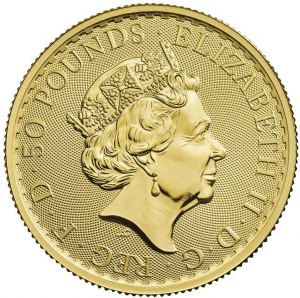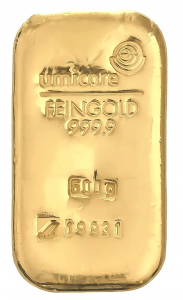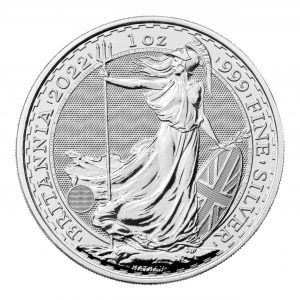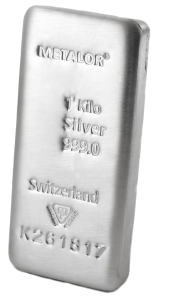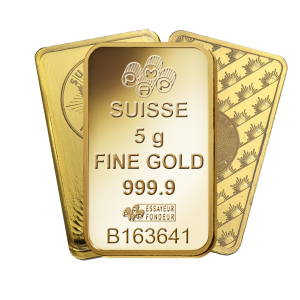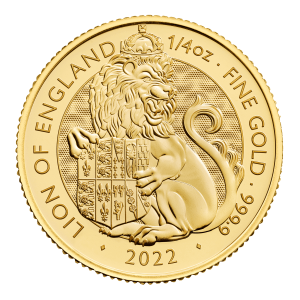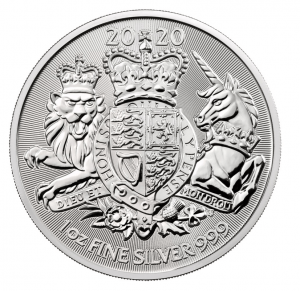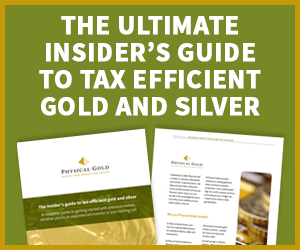What does the term bullion mean?
Bullion is a term that is often misunderstood or misinterpreted. It is a broad term used to describe precious metal bars and coins that have been mass-produced for investors.
A bullion coin is also a numismatic term that refers to production standards used to manufacture coins that were mass-produced after the 1930s.
These are quite different from coins with a ‘proof finish’ which means a lot of detail has been brought out due to the higher quality of finishing. Therefore, bullion coins are often the cheapest way of investing in the precious metals market. The value of the coins you buy will be more or less dependent on their silver or gold content. Bullion coins attractive lower premiums and does not have higher prices due to packaging, exclusivity or quality of finish.
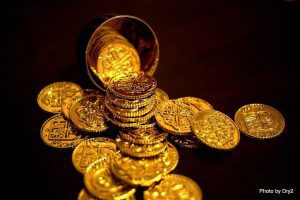
Gold bullion coins offer great value for money
The Royal Mint Bullion coins
The Royal Mint is one of the world’s oldest producer of coins. With a history spanning more than 1100 years, the Royal Mint was originally created to produce coins for the Kingdom of England, and in time minted coins for the entire British Empire. The original mint was housed in the Tower of London and was established in 886 A.D. Currently, the Royal Mint is a limited company and a part of her Majesty’s Treasury.
The Royal Mint bullion coins were first introduced in 1957. At the time, there was a rising demand for gold sovereign coins and the mint started production of these bullion coins to protect British coinage from counterfeiting. Since then, the Royal Mint bullion coins have continued to satisfy demand from numismatists and investors alike.
Royal Mint bullion coins – the Sovereign
The sovereign is a flagship British coin with a gold content of 22 carats released by the Royal Mint since 1817. The Sovereign with a face value of 1 pound was a popular coin in circulation. It was later withdrawn from circulation and produced as a bullion coin for investors and collectors. It enjoys the reputation of being one of the most liquid coins on the planet. Since the coin has been around for more than 200 years, there is ample supply of this iconic British coin for investors to include within their portfolio.
The coin has witnessed the reigns of many British monarchs and the version released from 1817 onwards saw these coins in circulation until 1932. The Royal Mint bullion coins like the Sovereign are extremely attractive for investors, due to their low premiums, authenticity and gold content. Divisibility is an important consideration for many investors and the sovereign is available in different sizes and denominations.
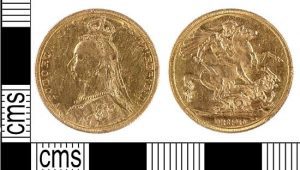
Gold Sovereigns are a perfect example of the Royal Mint bullion coins
Royal Mint bullion coins – the Britannia
The Britannia is yet another flagship British coin that enjoys great liquidity across the coin markets in the world. The original gold version was introduced as a bullion coin, in 1987. The Royal Mint subsequently issued a silver Britannia in 1997. The gold Britannia is an extremely collectable coin, and contains one Troy ounce of gold, while the coin denotes a face value of £100. The silver Britannia, on the other hand, contains one Troy ounce of silver but has a face value of 2 pounds. The purity of the silver Britannia has changed since 2013, and now has a purity of 999.9.
The silver Britannia – limits on mintage
When the silver Britannia was released in 1997, it had an initial mintage limit on the 1-ounce proof orders up to 16,005. The limit for proof sets of the coin was also set at 11,832. However, by 1998, one year from the initial release, the Royal Mint increased the mintage limit to 88,909. This action was taken to meet the escalating demand for the silver bullion coin. Going forward, the mintage limits were adjusted according to demand and by 2004, this limit was brought up to 100,000 and by 2016, this figure was raised to 200,000. The Gold Britannia bullion coins do not have mintage limits, but the proof coin sets do. As of 2020, only 150 sets were issued.
The Queen’s Beast series
Apart from the Britannia and the sovereign, the Royal Mint bullion coins also include others like the Queen’s Beast and the Lunar series. The Queen’s Beast series of coins was launched in 2016 and features statues of the Queen’s Beasts at the historic coronation of Queen Elizabeth II. The coins were designed by Jody Clark and the series also includes a 2-ounce silver coin, which is a first for the Royal Mint. The series has 10 planned coins, each featuring a stylised image of a Queen’s Beast.
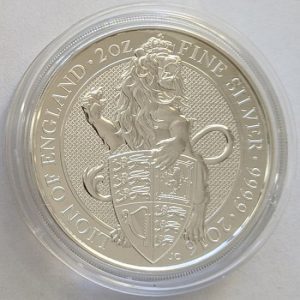
This silver Queen’s Beast coin features the Lion of England
The Lunar series
The Lunar series of gold coins is yet another edition of the Royal Mint bullion coins. Introduced in 2014, the series launches a new coin every year, featuring an animal from the Chinese Zodiac. These are animals that are used to denote and celebrate each lunar year.
There are 12 issues planned throughout the series and several have already been launched, including the dog, monkey, sheep, horse and the rooster. The lunar gold coins are highly collectable and enjoy popularity amongst people collecting the Royal Mint bullion coins.
Interestingly, these coins are also very popular with Chinese investors and enjoy healthy demand from Asia’s gold loving markets. There are still several issues of the lunar gold coins in the pipeline and most collectors wait eagerly for new editions to be launched so that they can complete the entire set.
Call our coin experts at Physical Gold for advice relating to Royal Mint bullion coins
If you are a numismatist or an investor who wants to include Royal Mint bullion coins as a part of your portfolio, call our coin experts on (020) 7060 9992. You can also reach us via our website and a member of the Physical Gold team will contact you to discuss your purchases and provide you with the right advice for investing in Royal Mint bullion coins. Our advisors can help you achieve your goals and ensure you buy the right coins at the right time and price.
Image credits: Dry2, Wikimedia Commons and Wikimedia Commons
When it comes to coin collecting, every investor will have their own personal set of motivations and reasons for investing. Not every coin collector is a numismatic, (someone who studies coins from a historical, social, or artistic point of view) but they will all have their own set of criteria that determine which coins they wish to invest in.
The motives of a coin collector can vary from being a hobby, for sentimental value or as an investment. The type of coins purchased will differ for each of these types of collectors.
Collector to numismatist
Many numismatists don’t necessarily understand the philosophy of numismatics when they start out. They simply start out by default as a collector. During this period, which often starts at school for many, they come into contact with other collectors and compatriots who are at best interested in the field as a hobby. At this stage, they start trading coins, giving away their duplicate coins in exchange for other coins which they perceive as adding value to their collection. Many understand that their coins may have a certain value at this point in time, as they start to sell off their duplicates and manage to get a fair price for it. Enthused by a monetary angle, in addition to their passion for coins, they start to take numismatics more seriously. For many such numismatists, they start to attend major numismatic events across the country from their late teens to their twenties, gathering knowledge and expertise on the subject of coins.
For those who manage to keep their passion alive through their work lives, they will start formulating their own investment strategies. Through their vast network of contacts, they are able to now source coins of value, as well as identify these gems with a seasoned eye. These numismatists soon start to view precious metal coins as a preferred class of gold investment. Numismatists appear to prefer bullion coins instead of bullion bars, simply due to their passion for coins and banknotes. For some, their passion, in fact, becomes their work, and they align themselves with big-ticket coin dealers and play the dual role of buyer for some and supplier to others.
Evolving your own specialism
Many numismatists start to focus on certain areas of collecting, specialise in these areas and are soon well known for their expertise. For example, many specialise in old coins prior to 1838, often known in numismatic circles as ‘Early Date Gold’. These are typically British and American gold coins which are full of history and are highly sought after by investors and collectors alike. The pre-1838 ones and the pre-1800 ones are difficult to come by and command great value. Of course, apart from the monetary value, there is great joy and satisfaction to be had in the heart of a numismatist when he/she can make a rare ‘find’.
Then there are ‘key date’ coins, based on mintages around certain key historical dates, like the fall of the Berlin Wall, Man on the moon, etc. The key date is represented in the mintmark on the coin. Numismatists often collect key date coins years in advance as part of a set building strategy. Then they play a waiting game for the specific event to gain historic importance. They also capitalise on the scarcity of the coins from these dates as it slowly builds up. A simple example could be the 50p coins that were circulated in the UK to commemorate the London Olympics. At the time, everyone had them, but as the years went by, they have now grown scarcer and are worth a fair bit of money today.
Commemorative coins
Coins that are issued to celebrate a special key date are often known as commemorative coins. A good example from recent times would be the Brexit coin. This commemorative coin is minted in silver as a proof coin by the Royal Mint and marks the date of Britain’s withdrawal from the European Union in 2020. The coin was struck using silver with a purity of 92.5% and had a limited mintage of only 47,000. Since the coin has already been sold out, its value is likely to escalate in the future, as demand for the commemorative coin rises.
Commemorative coins of even greater value can be found within British coinage of the 18th and 19th centuries. For example, the Queen Victoria Jubilee head is a commemorative coin issued in 1887 to celebrate the Queens. Golden Jubilee. Its mintage lasted for only six years, and the coin was last struck in 1893. Similarly, the 1871 Queen Victoria young head Sovereign is also a commemorative coin that celebrates the inauguration of the Royal Albert Hall by the Queen in 1871. These older commemorative coins are now becoming scarce and collectors willing to pay hefty premiums for these commemorative coins in an unscathed, mint condition.
Other thematic specialisms developed by numismatists include collecting proof coinage of the American Civil War. These are hard to come by today and is a coveted area of coin study. Many numismatists who are good at sourcing and have great contacts collect ‘pedigree coins’, i.e. coins owned by someone famous, like a Hollywood film star, royalty, business tycoons, etc. The American gold rush is another historic area of interest for many collectors, as these coins are rare to come by. The San Francisco mint opened in 1854, during this period and many of the gold rush era coinage was struck at this mint.
Coins are bought by certain collectors because the commemorative event or the specific year they were produced may bare a nostalgic value to them. It may represent the year of marriage or birth or signify a specific event such as the Olympics or a sovereign’s anniversary. Most of the World’s commemorative coins were produced from the 1960s onward and have a distinct design with reference to the occasion on which they were issued. Collectors are often not concerned with the resale value it is just a coin that may mean something to them and that they just want to own. They tend to be expensive as they require a high cost of production and usually include a presentation box.
Hobby collectors may be interested in specific dates or releases, where a substantial premium will be added for their uniqueness or appeal. They may be purchasing to complete a set or just because they appreciate the coin for its beauty. Often hobby collectors buy proofs or sets of proofs that may come in a display pack of limited issue, these often have an additional premium which they will find difficult to recoup when they come to sell.
For other collectors, coins are very much an investment. These types of collectors look at coins primarily as a way of making money and hope to profit from particularly rare or hard-to-source coins. Often these investors will methodically research particular dates or mintmarks of rare coins in order to find some defining characteristic that makes them of value. Perhaps there weren’t many coins minted one year? Or there may be a coin has a slight defect leftover from the minting process that makes it unique or of higher value.
Some investors also like to focus on a particular sub-category of coins such as Lincoln cents or Victorian sovereigns. This is partly because investors like to collect complete sets of coins and also because by narrowing their focus to concentrate on a particular area of coins, they can research them in far greater depth.
That’s not all
Some investors look at ancient or very rare coins that bare much larger premiums, up to 200% higher than its intrinsic gold value. The term ‘numismatic coin’ is given to those worth a substantial premium over their simple gold value due to rarity and history. These coins can be bought at auction or from specialist numismatic coin dealers.
Investing in rare and ancient coins is a much riskier investment as the coins are less liquid and their perceived value may be very different from their market value. We do not recommend investing in ancient or numismatic coins unless the purchaser has experience of this market and can afford to potentially wait some time for the right buyer. Gold coins minted pre-1800 and those sold at premiums that exceed 180% of the intrinsic gold value may also be subject to VAT, whereas newer coins (which meet certain criteria) are exempt. In the USA pre-1933 gold is extremely popular as it is non-reportable and non-confiscatable.
Talk to the numismatic experts at Physical Gold
At Physical Gold, our team consists of highly experienced and capable numismatic experts who have great knowledge and experience in the field. Whether you are an amateur hobbyist or an intermediate level numismatist, you would surely gain by having a discussion with our team about your goals as an investor and a collector. Call us on 020 7060 9992 or drop us a line through our website. A member of our team will be in touch with you to have a friendly chat.
Sovereigns are one of the most popular British coins that investors opt for. When compared to other gold coins, Sovereigns tick many boxes, which make them attractive to investors. Firstly, they are available in a variety of sizes. The full, half and quarter Sovereigns are found in many investment portfolios. There are fractional ones as well – the one-tenth and the one-twentieth of an ounce. If any investor focuses on divisibility, these are great options. There is even the quintuple Sovereign or the 5-pound gold coin which presents great value for money.
Of course, the coin has been around for 200 years, and many issues are freely available. They are extremely well-known all over the world, which makes the Sovereign one of the most liquid coins in the market. In addition to all these reasons, investors love the Sovereign due to its tax friendliness. Sovereigns are VAT and CGT free for all UK residents. The question is – should one buy the older coins or the new ones? The brand-new ones are released as a bullion coin, available in an attractive blister pack. Which ones are a better buy?
Download the 7 crucial considerations before you buy gold coins. Click here
The best type of Sovereign to buy will depend on your objectives and budget. Brand new (current year) Sovereigns are actually the cheapest to buy as they do not yet hold a historical or scarcity value. Older Sovereigns cost more to buy for these reasons but are worth more and may rise in value quicker. Ideally, a mix of the two types will achieve the most balance.
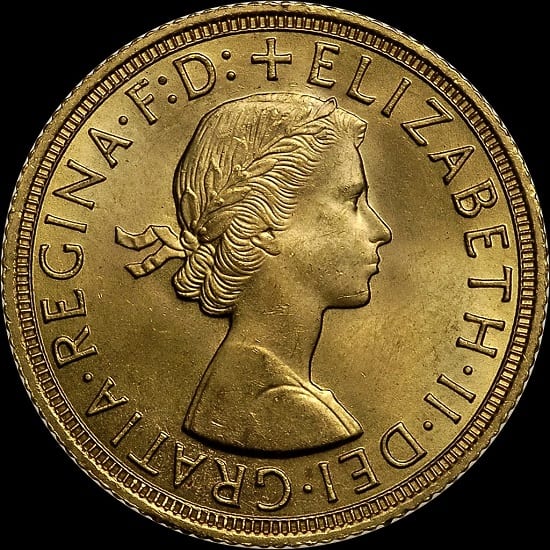
1959 Queen Elizabeth II gold Sovereign
Setting your objectives
It is probably apt to start with objectives first. There are a variety of different reasons and motivations for buying gold Sovereigns that vary from numismatists to investors. Collectors will usually search for older Sovereigns that carry a scarcity premium. George III Sovereigns are extremely rare and valuable and these coins have fetched prices well over £100,000. An investor will think differently. Collectors are always happy to pay premiums and purchase proof coins, which are more attractive and expensive. Investors, on the other hand, would always opt for bullion coins, which offer a far better potential for investment.
Buying newer bullion coins
New gold Sovereigns have certain distinct advantages. Price plays an important role in the acquisition of newer Sovereigns. Since the new coins do not attract large premiums based on scarcity, rarity and age, investors can bag a bargain and acquired these at lower price points. The demand for Sovereigns is great and the secondary market price remains buoyant on the back of healthy demand.
Therefore, good resale prices can be expected in the future and investors can maximise their profits by investing in these coins. However, December is not a great month to buy, as premiums tend to escalate during this time, in anticipation of the next year’s issue. If you plan to buy large quantities, you can get better discounts from reputed dealers. It is also important that you evaluate the different deals offered by several dealers. You can get the best deals by simply shopping around and checking the prices offered by different dealerships.
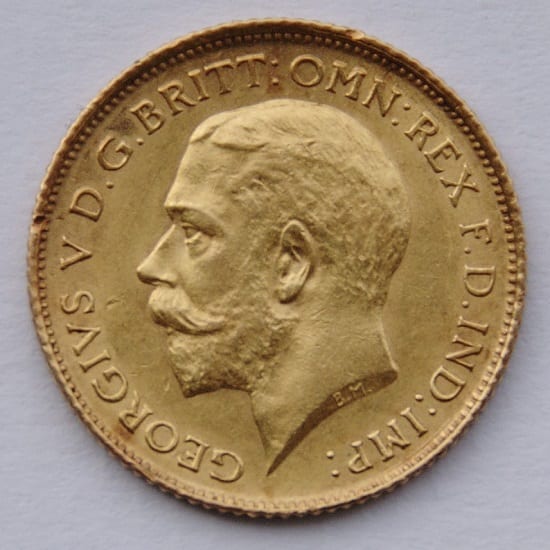
King George V Half-Sovereign
Larger Sovereigns are a better buy
There can be great advantages when you buy a larger Sovereign coin. Larger coins benefit from lower production costs. The costs incurred in designing and cutting smaller versions of the same coin add to the overall margin. By purchasing the double Sovereign or the quintuple Sovereign, you can acquire more gold content at a lower price point.
Call Physical Gold to understand the best opportunities in gold Sovereigns
As the Sovereign is one of the most popular British coins for investment, our team conducts extensive research on the availability, demand and market price of the coin. You could benefit from the impartial advice that we can offer you. Call us on (020) 7060 9992 or simply reach out to our team online via our website.
Image credit: Wikimedia Commons and Wikimedia Commons
Investing in Britannia Gold coins
The gold Britannia is perhaps the most famous UK gold coin. The coin is well-known all over the world for its popularity and liquidity. Gold experts believe that it is a flagship coin that every investor needs to start with when building a portfolio. The coin has only been around since 1987, and therefore, does not command high premiums based on age and rarity. It is available with every gold dealer as a bullion coin.
The Britannias track the gold spot price and can appreciate or depreciate with that price. It’s arguably the most popular gold investment in the UK as the coins are very good value due to mass production and their larger size. They’re completely tax-free due to their legal tender status, and their Royal Mint heritage enhances their global appeal.
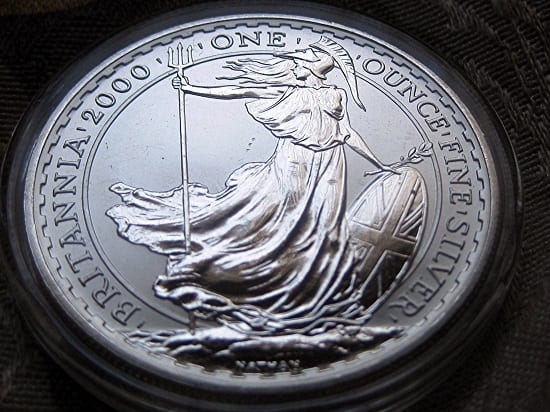
The iconic Britannia is also available in silver
The spot price plays a critical role in determining the value of a gold Britannia. Of course, supply and demand for particular coins can vary in the market. Although the coin has only been around for four decades, specific years of issue can be hard to find. These coins may carry premiums up to 5% due to their scarcity. In general, the 1-ounce gold Britannia has been known to command, approximately 98% of the current spot price of gold.
What are the factors that can affect the investment value of a gold Britannia?
Apart from the spot price, there are a few other factors that may impact the value of a gold Britannia. To start with, it is a bigger coin and provides investors with more gold content. This makes it very attractive as an investable coin. Larger gold coins provide investors with the opportunity to acquire more gold at a lesser price per gram, due to lower production costs. The gold Britannia falls under this category and is considered to be a lucrative coin to invest in. As discussed earlier, scarcity of specific issues and special commemorative issues can escalate the price of those specific coins.

The Britannia icon, seen here as a national statue, is represented on the coin
Tax efficiency makes it a lucrative investment
The gold Britannia is a highly tax-efficient coin, making it attractive to investors. Since the coin is minted with investment-grade gold, it can be bought VAT free. Similarly to the Gold Sovereign, the Britannia is legal tender in the UK and therefore qualifies for CGT exemption. This is an added fillip for investors, as any profits accrued from the sale of the coin up to £12,000 per tax year can be had without paying any Capital Gains Tax.
Fineness of gold
Since 2013, the gold Britannia is being minted using 24-carat gold with a fineness of 0.999. This is a very powerful reason for investors to acquire the coin. The coins released before 2012 contained 22-carat gold with a fineness of 0.917. Since 1990, the gold alloy used to construct the coin contained silver, instead of copper.
Different dimensions
Another reason for the gold Britannia to be the backbone of every gold portfolio is the variety factor. The coin was initially released in four sizes – 1 ounce, half-ounce, quarter-ounce and one-tenth. However, since 2013, a 5-ounce coin is available, which is very lucrative for investors. Additionally, a fractional coin that is one 20th of an ounce is also available in the market. This has improved, divisibility, as well as variety, making the gold Britannia an excellent investment.
Call Physical Gold to discuss your gold Britannia purchases
Our gold experts are adept in acquiring the best deals for the gold Britannia coin as well as the silver Britannia coin. We can advise you on the right investments in gold and silver coins to strengthen your portfolio. Call our team today on (020) 7060 9992 or drop us an email and a member of our team will reach out to you right away.
Image credit: Eric Golub and Wikimedia Commons
Sovereign coins
Sovereign coins are 22 carat UK gold coins issued by The Royal Mint since 1817. With a face value of £1, they were initially circulated but are now popular amongst investors and collectors. The coin is minted by the Royal Mint, as a bullion coin and some designs of the coin are released in limited numbers. This is one aspect of the gold Sovereign that elicits healthy interest from investors and numismatists alike. The gold Sovereign enjoys a reputation of being one of the most liquid coins in the world.
Investment in these coins is widely regarded as safe and secure, and can also be used as a strategy to create diversification within a traditional investment portfolio, creating a good balance of paper asset classes and physical assets like gold and silver. Due to the scarcity of certain issues of the gold sovereign, the coin may attract high premiums. Their value can rise with the price of gold and also with their scarcity and antiquity. The gold Sovereign provides investors with plenty of options since this iconic British coin has been around for more than 200 years.

A 1959 Queen Elizabeth II gold Sovereign
A coin that has seen the reigns of many monarchs
The earliest version of the gold Sovereign was issued in 1489 and is popularly known as the English Gold Sovereign. Today, this is extremely rare to find and it can fetch very high premiums due to its demand and scarcity. These coins were around until 1604. The weighed half a Troy ounce and was originally minted with 23-carat gold. During the reign of King Henry VIII, the gold content was reduced to 22 carats. Years later, during the Great Recoinage of 1816, the gold Sovereign was reintroduced in 1817, effectively replacing the original English Sovereign. By this time, the Coin Act had come into place and stringent technical specifications were introduced for the new Sovereigns, which are followed even today. The gold Sovereign was in circulation until 1932 and has since been released as a bullion coin.
Where are the Sovereigns minted?
Between 1817 and 1917 – a period of hundred years, the gold Sovereign was minted in the UK. However, mintage was shared with other reputed mints across the British Empire after 1917. The new production of the Sovereign was distributed across Canada, Australia and South Africa. By 1957, colonial rule had ended across the world and the Sovereign was once again minted exclusively by the Royal Mint till 2013.
Since then, the Royal Mint has inked a deal with MMTC-PAMP, a company based in India to share mintage of the gold sovereigns. This move was undertaken primarily due to the high demand for gold products in Asia. Although the production has been partly outsourced, strict quality controls continue to be in place and the Sovereigns produced in India are identical to the ones minted in the Welsh-based Royal Mint. The only difference is that the ones produced overseas bear a special ‘I’ mark.
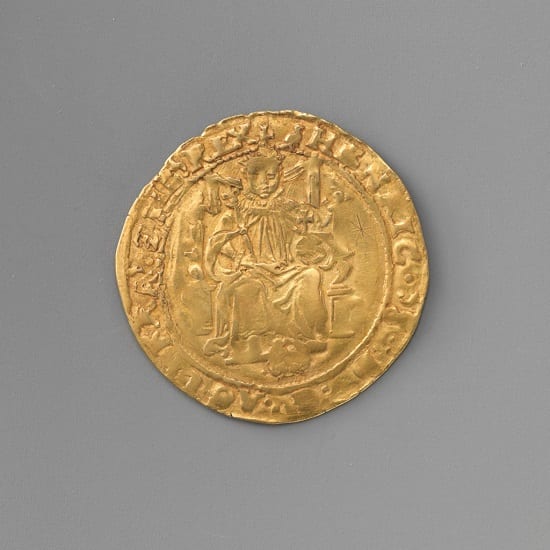
A rare half-sovereign of King Henry VIII
The tax efficiency of gold Sovereigns
Gold Sovereigns are manufactured using investment-grade gold. Therefore, they enjoy VAT free status in the UK. Since the coins are considered legal tender in the country, they are also free from capital gains tax. Any gains are tax-free.
Speak to the gold experts at Physical Gold, if you want to invest in gold Sovereigns
At Physical Gold, we have gold investment experts who can offer impartial advice on investments in gold coins, especially iconic ones like the gold Sovereign. Please call us today on (020) 7060 9992 or get in touch with us online by dropping us an email
Image credit: Wikimedia Commons and Metropolitan Museum of Art
Gold Coin Investing
In the world of precious metals investing, it is often said that there is no match for gold. Investing in gold coins can be extremely lucrative, both as a hobby and as a profit-generating investment vehicle. Many investors consider coins to be a better investment since they add liquidity and divisibility to any portfolio. However, it’s important to understand the philosophy and the rules of investing before buying gold coins.
Buying gold coins can be an excellent investment for those seeking portfolio balance. Owning gold in the form of coins, means you have the flexibility to sell small parts of your holding. Sticking to the main bullion coins such as Sovereigns, Krugerrands and Britannias, will enable you to buy at low prices and sell easily. Buying UK gold coins additionally benefits UK investors because any gains made on the sale of the coins is free from tax.
Download the 7 Crucial Considerations before buying Gold coins. Click here
British gold coins are both VAT and CGT exempt, offering investors a wonderful opportunity to maximise their tax savings on their investments. All investment-grade gold is VAT free in the UK and UK gold coins, being legal tender in the country, are also CGT free. That means any profits you make generate when selling is automatically tax-free.
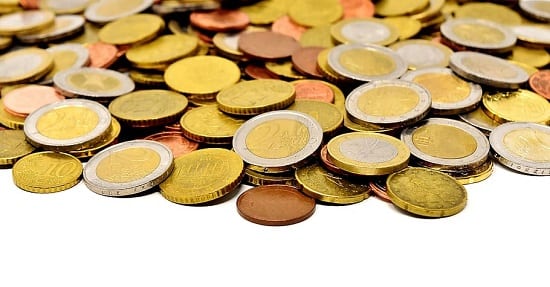
Gold coins are a lucrative investment
Buy gold coins that enjoy a healthy secondary market
Several investors make the mistake of investing in obscure coins due to their collectability and rarity value. But, this is never a good strategy. Your investments in gold coins can reap great benefits if you buy liquid coins like the Britannia or the gold Sovereign. These coins are easily available in the market, without hefty premiums as they are mass-produced. Discounts can be availed on large quantity purchases. By following these simple strategies, you can achieve good returns on your gold coin investments. Liquid coins are much easier to sell at any point in time, as opposed to obscure gold coins.
Gold coin investing can be very tax-efficient
To save on taxes, it’s important to know which gold coins to buy. Well-known coins like the Krugerrand enjoy a great secondary market and possess all the attributes required to make it an attractive investment. However, only UK coins are considered to be legal tender and their sales are CGT exempt. By investing in British gold coins, you also get the double benefit of your purchases being VAT free. Needless to say, these are important considerations for any savvy gold investor whose objective is to build a strong portfolio and generate healthy returns over a period of time.
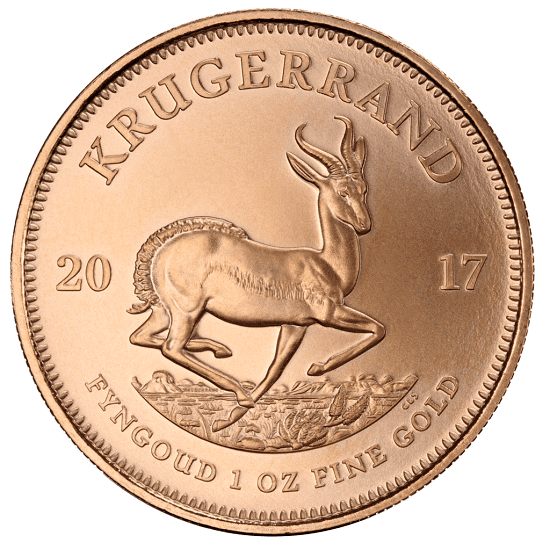
Non- UK gold coins like the Krugerrand do not qualify for CGT exemptions
You can also combine collectability and profits when investing in gold coins
Not all gold buyers are purely investors. Many collectors acquire gold coins as a hobby, and their purchases are based on numismatic interest. Of course, one can combine both these objectives and create a portfolio that has good numismatic value, as well as potential to generate profits. So, you don’t have to stick to buying only mass-produced bullion coins. A perfect example of a diversification strategy could be the Royal Mint’s Lunar series or the Queen’s Beast coins. These are well-known coins that enjoy liquidity and divisibility while generating added value as collector’s items. These coins have generated healthy returns for investors and values have risen by as much as 40% in a single year.
Our investment advisory team can help you invest in the right gold coins
At Physical Gold, we are always keen to help investors achieve their objectives through impartial advice. Call us today on (020) 7060 9992 or get in touch with us online to find out how our investment advisory team can help you identify the right gold coins for your portfolio.
Image credit: Pxfuel and Wikimedia Commons
Selling Gold Britannia coins
One of the golden rules of investing in gold coins is never to buy obscure coins. Gold Britannia coins offer liquidity to your portfolio. As a popular investment coin, it is easiest to sell Britannias to a reputable precious metals dealer, especially one whose focus is gold investing. The first consideration when selling gold Britannia coins is the spot price. The 1oz gold coin can usually be sold for around 98% of the prevailing spot price of gold in the market. However, supply and demand can also play an important role in the price you can achieve when selling gold Britannia coins. Although the coin has been around since 1987 and does not command premiums due to rarity and age, there are some years of issue that may be harder to get. These coins may achieve a higher premium – up to 5%. In this article, we will explore the best strategy is to adopt when selling gold Britannia coins.

The gold Britannia was launched by the Royal Mint in 1987
How does the spot price affect the value of a gold Britannia when selling?
The price will reflect the coin’s gold content and a sale can be tied up very quickly. Selling Britannias privately may achieve higher prices if you can find a collector, but issues of trust and time exist. In reality, the spot price only indicates a guideline at which the coin can be sold. Market conditions can dictate the amount of premium that you can hope to achieve over and above the spot price.
Download the Insiders Guide to Selling and Buying gold coins here
Now, it’s important to realise that other factors can impact the selling price of the gold Britannia. For example, if the coin you’re selling is larger, it benefits from lower production costs. Therefore, it is an attractive proposition for the buyer, as the coin becomes available at a lower price per gram.
Build a good relationship with a reputable dealer
An important step in selling gold Britannia coins is getting connected with a well-known dealer. Selling gold coins privately is a time-consuming option that is fraught with risk. If you attempt to sell your gold coins to a jeweller or a high-street gold shop, you will invariably receive far lower prices than expected. A reputable gold coin dealer can offer advice on the right time to sell the coins and assist you in achieving the price you desire.
Early intimation of your intention to sell can help your dealer scope the market and identify buyers in advance. Identifying reputed dealers can be fairly simple. Most of them are registered with the BNTA. Dealers like Physical Gold will also offer you a transparent process for selling and ensure you benefit from the right advice when you sell your coins with them.
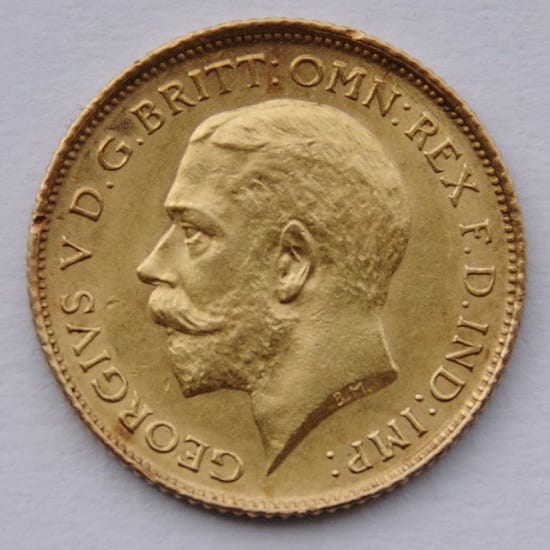
Like the gold half Sovereign, the gold Britannia is a very popular and liquid coin
Ensure that you make tax-efficient sales
If you invested wisely, at the time of buying, you would have added divisibility to your portfolio by investing in different sizes and denominations of the gold Britannia coin. When selling, this should enable you to sell the exact amount of gold required to fund your cash requirements. This would also enable you to drip feed small amounts of gold into the market and take advantage of different price points.
The gold Britannia is legal tender in the UK and any profits you make from its sale are CGT exempt up to a level of £12,000 in a single tax year. It’s important to be aware of the tax implications when making a sale so that you are not misled by third-parties.
Talk to our investment team before selling your gold Britannia coins
Physical Gold is one of the nation’s most reputed online gold dealers. Our investment experts research the gold market at all times. If you intend to sell gold Britannia coins, please call us on (020) 7060 9992, so that we can give you the right advice on how and when to sell. Our investment team is also reachable online through our website.
Image credits: Wikimedia Commons and Wikimedia Commons
Gold Britannia coins
Britannia gold coins are a 1oz fine coin produced by The UK Royal Mint. Its purity is 999.9 (increased from 22 carats from 2013) and it has a face value of £100. It’s minted in bullion and proof finishes, fractional sizes, silver and now platinum. It was launched in 1987 to compete with the South African Krugerrand and has now become one of the best value investment coins available, especially as it is Capital Gains Tax-free in the UK.
Flagship Royal Mint coin
It has gained repute internationally as a flagship British coin. Many investors and collectors build their portfolios with the Britannia as a backbone. The Britannia gold coins contained a single troy ounce of 24-carat gold. As discussed above, it denotes a value of £100. The silver version of the Britannia is a coin that displays a face value of 2 pounds. Like its gold counterpart, the silver Britannia has one Troy ounce of pure silver. The iconic coin has two sides and displays the image of the reigning monarch on the obverse. So, gold and silver Britannia coins that are currently minted will all have an image of our reigning Queen, Elizabeth II.
On the reverse of the coin, one sees the classic image of Britannia. The silver Britannia was issued since 1997 and the design on its obverse was created by Jody Clark. The Britannia image itself on both silver and gold coins (since 1987), was designed by Philip Nathan. It is considered to be one of the most liquid gold coins in the market and its great global repute has ensured that gold Britannia coins are easily saleable at any point in time.

The Royal Mint issued the gold Britannia in 1987
Variety in sizes
Since 1987, the gold Britannia has been available in four different sizes. They are – one, half, quarter, and 1/10 of an ounce. This is an added bonus as it adds variety to the coin. In fact, since 2013, the coin is available in many more sizes, including a large 5-ounce coin. This large coin has become attractive to investors as it delivers a greater amount of gold at a lower price per gram.
Newer Britannias offer better deals
In terms of its value in gold, the new Britannia coins are a better bet. Firstly, the newer coins are abundantly available in the marketplace. Therefore, premiums are quite low. Secondly, many dealers are willing to offer bulk discounts for larger purchases. These factors ensure that you can buy these coins at bargain prices. In the process, you’ll ensure that you make good profits by getting in cheaper and selling at higher prices in the long term.
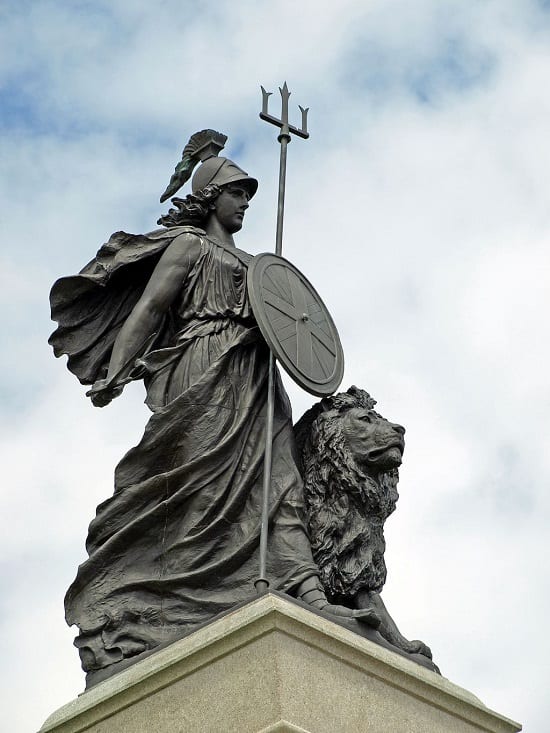
The Britannia image is featured on the reverse of every gold Britannia coin
Some special issues are also available
The Royal Mint celebrates different occasions and dates in British history by issuing a commemorative coin. Of course, the gold Britannia has also enjoyed many special issues. One of the more recent special editions was the 30th-anniversary gold issue, which was priced at £1048 in 2017. Another special issue worthy of mention is the 8mm coin. This is a proof coin, which is considered to be the smallest Britannia ever minted. The coin contains 1/40 parts of an ounce of gold. The mintage was only 1500 coins and is very desirable to collectors.
Call Physical Gold to buy gold Britannias today
The gold investment specialists at physical gold can provide you with guidance on which Britannia gold coins you should buy, at what price and when. Do call our team on (020) 7060 9992 or get in touch with us online to discuss your gold Britannia purchases today.
Image Credits: Wikimedia Commons and Wikimedia Commons

